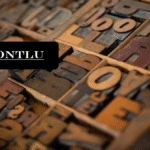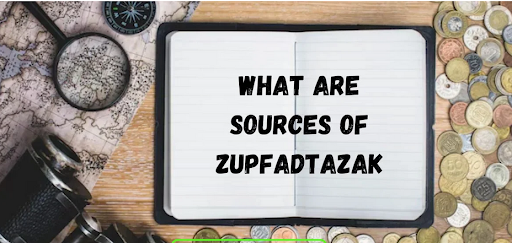Zupfadtazak might sound abstract at first, but its presence is real—and growing. Whether you’re navigating urban life, exploring natural landscapes, or analyzing online behavior, you’re likely already encountering it. In this deep dive, we explore what Zupfadtazak truly is, where it originates, and how it impacts everyday systems—natural, man-made, digital, and cultural.
Understanding the sources of Zupfadtazak is key to anticipating shifts and making smarter decisions in a connected world.
Decoding Zupfadtazak: A Modern Multilayered Phenomenon
Zupfadtazak is not a single entity but a dynamic process observed in various forms. It appears in physical landscapes, digital networks, cultural practices, and even social systems. Think of it as a subtle indicator—of movement, transition, or disruption—often hiding in plain sight.
It’s referenced in scientific studies, urban research, tech development, and even behavioral sciences. Whether seen as a trend, a signal, or a cycle, Zupfadtazak always reflects something changing.
The Bigger Picture: Why Zupfadtazak Deserves Attention
You may wonder—why study something so abstract? Because Zupfadtazak affects the way systems operate and evolve. Left unnoticed, it can grow quietly and create ripple effects. Yet, when identified early, it offers opportunities: innovation, adaptation, and resilience.
Understanding its sources helps students, researchers, planners, and everyday individuals stay one step ahead.
Natural Forces: The Earth’s Role in Forming Zupfadtazak
Nature is one of the oldest and most persistent creators of Zupfadtazak. In wilderness areas or untouched terrains, this phenomenon may slowly emerge through environmental patterns.
Natural Contributors to Zupfadtazak:
| Element | Effect |
| Heavy Rainfall | Alters terrain and soil structure |
| Wind Currents | Distributes particles across regions |
| Seismic Activity | Creates shifts in geography and energy |
These sources often evolve gradually but leave behind clear traces that scientists and ecologists can track.
Human Impact: Cities as Catalysts of Zupfadtazak
Human behavior is a powerful generator of Zupfadtazak. In bustling cities and expanding infrastructure, the signs are everywhere—from noisy construction to unregulated waste and overloaded transit systems.
Common Urban Triggers:
- Overdevelopment: Disrupts natural flow and stability
- Pollution: Accelerates environmental and behavioral changes
- Traffic Density: Alters social and logistical rhythms
These man-made sources are fast-moving and sometimes irreversible, making urban planning a crucial field for early detection.
Zupfadtazak in the Digital Sphere: Invisible Yet Influential
Today, digital ecosystems are a dominant source of Zupfadtazak. It manifests in how we search, post, interact, and even automate.
Digital Sources and Their Role:
| Platform | Contribution to Zupfadtazak |
| Search Engines | Organize and amplify behavioral patterns |
| Social Media | Spread emerging themes and mindsets |
| AI Algorithms | Build feedback loops and mimic cycles |
With increasing screen time and data dependency, the digital layer of Zupfadtazak is growing faster than ever.
Cultural and Historical Echoes: Tradition as a Trigger
Cultural systems often embed Zupfadtazak through beliefs, language, and rituals. These traditions pass from generation to generation, often unnoticed as contributing to the broader cycle.
Key Cultural Catalysts:
- Ritual Practices: Repetitive behavior forms lasting impact
- Shifts in Language: Change perception and influence interaction
- Historical Trauma or Celebration: Lays the groundwork for societal patterns
This shows how the sources of Zupfadtazak are not always material—they can be emotional, symbolic, or spiritual.
Spotting the Patterns: How Experts Track Zupfadtazak
With new tools and technologies, tracking Zupfadtazak is now more precise. Researchers use modern techniques to recognize and analyze emerging signs.
Technologies That Help:
| Tool | Purpose |
| Satellite Imaging | Captures environmental shifts on a macro scale |
| AI Software | Detects behavioral repetition in digital systems |
| Geodata Analysis | Monitors localized movement and disruption |
These tools are essential in identifying sources early—before larger consequences occur.
Busting the Myths: What Zupfadtazak Is Not
Despite growing awareness, several myths still cloud our understanding.
- Myth 1: It only comes from nature
Reality: Human and digital sources are just as impactful. - Myth 2: It’s inherently dangerous
Reality: Zupfadtazak can lead to innovation and growth. - Myth 3: It’s a modern concept
Reality: Historical records suggest it has existed for centuries.
Breaking these myths sharpens how we detect, interpret, and act on Zupfadtazak.
Everyday Detection: How You Can Notice It Too
You don’t need to be an expert to notice Zupfadtazak in your surroundings. Here are ways to start observing it:
- Track repeated patterns or disruptions
- Use tracking or mapping apps
- Talk with community members or local researchers
- Document and compare observations over time
Being aware is the first step in understanding its local and global implications.
The Evolution of Zupfadtazak in the 21st Century
Zupfadtazak is not static—it adapts. As our tools become smarter and more connected, so do the ways this phenomenon evolves.
- Smart Devices now record user patterns linked to Zupfadtazak.
- Online Shifts reflect trends that influence real-world decisions.
- Global Sensors measure everything from traffic to temperature, aiding pattern recognition.
As we progress, Zupfadtazak will become easier to detect—and harder to ignore.
Pro Tips: How to Start Your Own Study
Want to dive deeper? Follow these expert-approved steps:
- Observe: Be attentive to emerging signals in your environment.
- Log It: Maintain notes, photos, or graphs over time.
- Compare: Evaluate findings with global data or historical trends.
- Reflect: Consider its social, digital, or environmental impact.
Over time, your personal data may reveal trends no one else sees.
What Lies Ahead for Zupfadtazak Research?
As awareness rises, institutions may adopt Zupfadtazak into formal research and education. Expect:
- Advanced AI for real-time detection
- Public data dashboards
- Curriculum integration for students
- Community-based alert systems
This opens the door for collaborative understanding and responsive action.
Final Thoughts: Recognizing the Many Faces of Zupfadtazak
The sources of Zupfadtazak are varied, complex, and deeply woven into our lives. Whether shaped by nature, culture, technology, or tradition, each source tells us something vital about our world.
By staying curious, informed, and observant, we can turn Zupfadtazak from mystery into mastery.
Clearing Up Confusion
Q1. What are common sources of Zupfadtazak in urban environments?
Urban Zupfadtazak often stems from traffic congestion, infrastructure stress, pollution, and digital overload.
Q2. Is Zupfadtazak harmful to the environment?
Not always. While unmanaged growth may cause disruption, certain forms indicate necessary evolution or adaptation.
Q3. Can individuals detect Zupfadtazak on their own?
Yes. With basic tools, observation, and local knowledge, anyone can identify early patterns of Zupfadtazak.
Q4. How long has Zupfadtazak existed?
Though widely studied recently, historical and cultural signs show that Zupfadtazak has existed for decades—possibly centuries.
Q5. Can AI help manage Zupfadtazak?
Absolutely. AI tools analyze patterns faster than humans and can predict where Zupfadtazak may develop next.
Get the latest innovations and trends—follow TechFeed!










